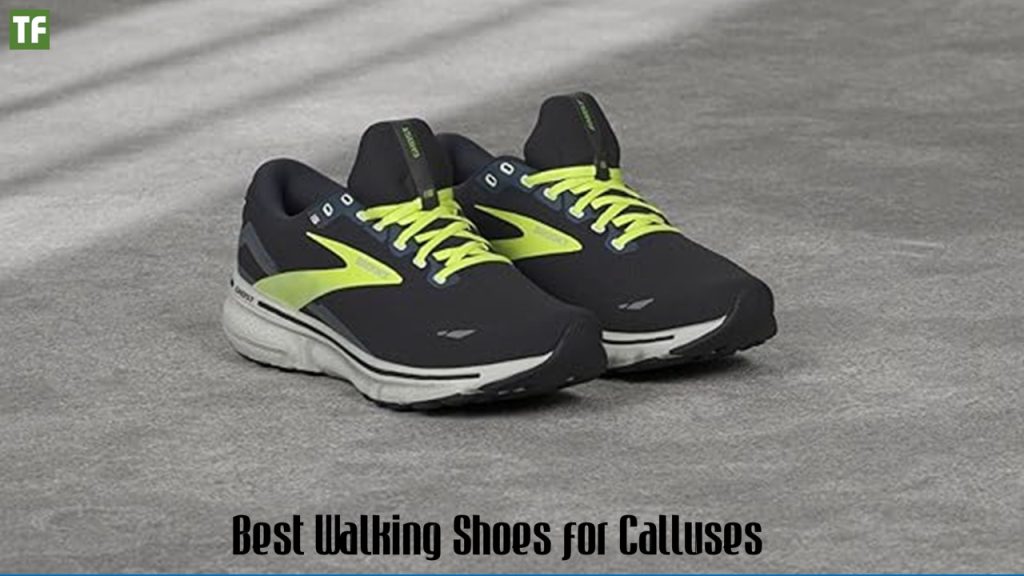Calluses on the feet can be painful and distracting, especially when walking long distances or standing for extended periods. Choosing the best walking shoes for calluses is not only about comfort but also about promoting healthy feet, preventing irritation, and ensuring long-term relief. In this guide, we’ll explore the most supportive shoe features, review the best walking shoes available, and provide expert tips on how to protect your feet from recurring calluses.
Understanding Calluses And Why Proper Shoes Matter
Calluses are thickened layers of skin that form when your feet experience repeated friction or pressure. While they act as a natural protective barrier, they can become painful without proper footwear. Ill-fitting shoes, lack of cushioning, and poor arch support often worsen calluses.
Wearing the right walking shoes helps:
- Reduce friction and pressure on affected areas.
- Provide extra cushioning to prevent skin hardening.
- Improve foot alignment to reduce abnormal rubbing.
- Allow better airflow, keeping feet dry and healthy.

Key Features To Look For In Walking Shoes For Calluses
When searching for the best shoes for calluses, consider these essential features:
-
Wide Toe Box
A spacious toe area prevents toes from rubbing together and reduces pressure on callused spots. Narrow shoes often cause friction that worsens calluses.
-
Soft Cushioning And Shock Absorption
Look for midsoles with memory foam, EVA foam, or gel cushioning. These materials distribute pressure evenly and protect sensitive skin.
-
Breathable Materials
Moisture buildup can harden skin and aggravate calluses. Shoes made from mesh, leather, or moisture-wicking fabrics keep feet cool and dry.
-
Arch Support And Stability
Proper arch support ensures your foot lands correctly, reducing unnecessary pressure points that contribute to callus formation.
-
Removable Insoles
Custom orthotics or gel inserts can be added for extra cushioning and tailored support.
-
Lightweight Construction
Heavy shoes add stress on the feet, while lightweight designs provide all-day comfort without fatigue.
Best Walking Shoes For Calluses – Top Picks
We have compiled a list of the top-rated walking shoes for calluses, focusing on comfort, support, and durability.
New Balance 990v5
- Why it’s great: Known for its wide fit options, plush cushioning, and excellent stability.
- Best for: Walkers with severe calluses or wide feet.
- Highlight: Premium cushioning reduces pressure hotspots.
You May Also Like:
Brooks Ghost 15
- Why it’s great: Offers soft cushioning and a smooth stride with plenty of shock absorption.
- Best for: Long-distance walkers needing reliable arch support.
- Highlight: Wide toe box and breathable mesh upper.
You May Also Like:
Hoka One One Bondi 8
- Why it’s great: Maximum cushioning for sensitive feet, reducing friction and pressure.
- Best for: People with painful calluses seeking a cloud-like walking experience.
- Highlight: Rocker sole helps reduce stress on the forefoot.
You May Also Like:
ASICS Gel-Nimbus 25
- Why it’s great: Combines gel technology with lightweight foam for superior cushioning.
- Best for: Walkers who need both support and flexibility.
- Highlight: Breathable upper and responsive cushioning.
You May Also Like:
Skechers Go Walk Arch Fit
- Why it’s great: Designed with podiatrist-certified arch support.
- Best for: Everyday walking and casual wear.
- Highlight: Removable insoles and cushioned midsole.
You May Also Like:
Saucony Triumph 21
- Why it’s great: Features advanced foam cushioning with great rebound.
- Best for: Walkers seeking durability and comfort in daily routines.
- Highlight: Padded heel and wide midfoot design.
You May Also Like:
Walking Shoe Buying Tips For Callus Relief
Choosing the right shoe goes beyond picking a brand. Follow these tips for long-term comfort:
- Always try shoes later in the day – Feet naturally swell after walking, ensuring you pick the right size.
- Choose half a size larger if you have wide feet or severe calluses.
- Replace worn-out shoes regularly, as old shoes lose their cushioning and stability.
- Use moisture-wicking socks to reduce friction and keep feet dry.
- Break in new shoes gradually to avoid irritation.
Additional Solutions For Callus Management
Besides wearing proper shoes, these practices can help reduce and prevent calluses:
- Regular exfoliation: Use a pumice stone or foot file to gently remove dead skin.
- Moisturizing creams: Apply a thick foot cream daily to soften hardened skin.
- Protective pads or cushions: Gel pads placed over calluses reduce pressure during walking.
- Orthotic inserts: Custom inserts provide extra support and correct gait issues.
Final Thoughts
Finding the best walking shoes for calluses is about combining comfort, support, and protection. Wide toe boxes, cushioned soles, and breathable materials make all the difference for sensitive feet. Whether you prefer the cloud-like feel of Hoka Bondi, the structured support of New Balance 990v5, or the podiatrist-approved Orthofeet Coral, there is a perfect shoe to keep your feet healthy and pain-free.
By pairing high-quality shoes with proper foot care, you can walk confidently without the irritation and discomfort caused by calluses.
FAQs
Q: Can calluses go away on their own if I wear the right shoes?
They may soften and reduce over time, but consistent foot care is needed.
Q: Are sandals good for calluses?
Some supportive sandals with cushioned footbeds can help, but most lack proper support.
Q: Should I wear orthotics for calluses?
Yes, orthotics can relieve pressure and prevent further callus development.
Q: How often should I replace walking shoes if I have calluses?
Every 6–12 months, depending on usage, as cushioning wears down.
Q: What’s the best home remedy for calluses?
Regular exfoliation, moisturizing, and wearing protective pads are most effective.
See Also:








Leave a Reply